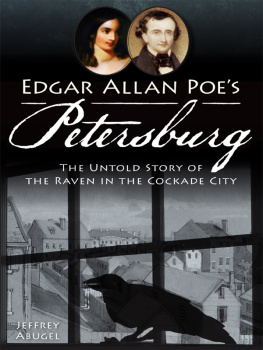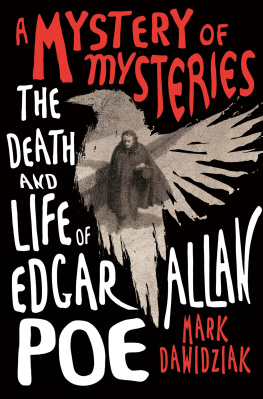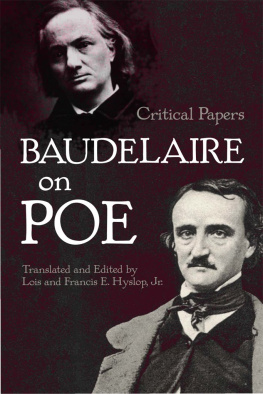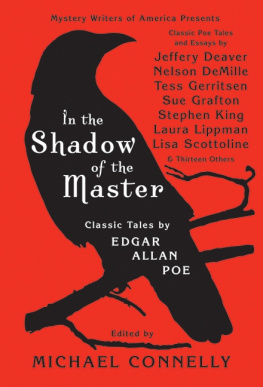
Published by The History Press
Charleston, SC 29403
www.historypress.net
Copyright 2013 by Jeffrey Abugel
All rights reserved
First published 2013
e-book edition 2013
Manufactured in the United States
ISBN 978.1.61423.858.4
Library of Congress CIP data applied for
print edition ISBN 978.1.60949.864.1
Notice: The information in this book is true and complete to the best of our knowledge. It is offered without guarantee on the part of the author or The History Press. The author and The History Press disclaim all liability in connection with the use of this book.
All rights reserved. No part of this book may be reproduced or transmitted in any form whatsoever without prior written permission from the publisher except in the case of brief quotations embodied in critical articles and reviews.
To Eddy and Sissy, in whose honeymoon suite this book was written.
Contents
Introduction
It was very likely the happiest time of his life. Yet despite the hundreds of books and articles written about the life of Edgar Allan Poe, few devote little more than a footnote to the honeymoon he enjoyed with his child bride, Virginia Clemm, in Petersburg, Virginia.
Petersburg is one of the most historic cities in the Southeast. But most of its publicized history relates to the Civil War, the Battle of the Crater and the Siege of Petersburg. In decades before the war, however, the town was a rich center of trade, ideas and entertainment, with a diverse culture that included people of French, Haitian and Scotch-Irish descent, as well as the largest free black population in the South.
Much of the history of this city, just twenty miles south of Richmond, has been buried in obscurity for decades, just as Poes early manhoodwith his clean-shaven face, natural athleticism and ability to live by his witshas taken a backseat to the dark, mustachioed literary figure more familiar to the world.
This book is built around two things that have been largely ignored by Poe fans and scholarshis relationship with Petersburg, beginning with his mothers many appearances as an actress, and his friendship with fellow poet and newspaper editor Hiram Haines. (Haines wife actually lived near Poe as a child, and people often mistook them for brother and sister.)
Until recently, Haines was buried not only in Blandford Cemetery but in obscurity as well. Documentation about his life, his work and his relationship with Poe was briefly brought to light in the 1930s and then subsequently forgotten. Locally published histories of Petersburg, which proliferated in the 1950s and 60s, often relied on sketchy facts and oral histories. This book is meant to illuminate the origins of the symbiotic friendship enjoyed between Poe and Haines, while portraying, as accurately as possible, the thriving city that Haines called home and that Poe chose as the ideal romantic escape.

The author discovers the grave of Hiram Haines in Blandford Cemetery. It has now been completely restored. Photo by Michael Adams.
CHAPTER 1
Bringing Back the Dead
I confess. I was never Edgar Allan Poes biggest fan. I respected his place among American poets but pretty much left what Id read behind in high school. Too many Hammer films, too much Vincent Price had long dissociated me from the body of work that went so far beyond A Cask of Amontillado and The Raven. Over time, the words of my favorite authorsBorges, Camus, Miller and Mishimabecame sacrosanct. Poe, somehow, seemed more Halloween than hallowed.
When I moved to Petersburg eight years ago, everything changed. Many aspects of Petersburg seem illogical, if not downright surreal. Not the least of these is the fact that the town possesses more fascinating history per square foot than virtually anywhere on the planethistory that is largely unsung and unknown.
With its riverside site and abundant historic architecture, the towns potential seemed boundless. But its chronic inability to tap into that potential can tax ones patience. In time, some folks just pack up and leaveunless they find a reason to stay. For me, it was Poe.
From the outset, locals told me that Poe had spent his honeymoon at what is now 12 West Bank Street. Furthermore, his parents were actors who performed in one of the many theaters in a vibrant, prosperous Petersburg before he was born. So why were there no historic markers, no tours for Poe fans, no proof of all this beyond an oral tradition?
As if compelled by otherworldly forces, Poes honeymoon quietly became my secret obsession. Where was the proof, I wondered? If the site was bona fide, I felt perversely compelled to acquire it before someone else did.

Poe as a young man was well groomed and clean-shaven. He would have appeared much like this growing up in Richmond as an athletic young man known for his feat of swimming the James River against the current.
I decided to approach the owner, who had quietly done much to revitalize Petersburg through the years. She rarely sold a building, but when she did, it was to someone who cared about history and the towns future. Over lunch, I laid out my plans. The owner knew about the alleged Poe connection and was pleased that I had done some homework. It looked like we might be able to strike a deal when the time was right, and that time might be sooner rather than later.
Be careful what you wish for, I reminded myself. There was still the matter of actually proving that Poe and Virginia had honeymooned at the building that now seemed within reach.
Months passed, and I was given the opportunity to explore the building. While the street-level retail space had been leased for some time, the upper levels of No. 12 far surpassed my expectations. It had not been inhabited by anyone for many decades. Aside from crude electrical conduits outside the ceilings and primitive bathrooms with claw-foot tubs, the rooms looked just as they did in 1814 when they were constructed. Unlike so many Petersburg buildings, it had never been pillaged; the heart pine floors were remarkably intact, protected in part by piecemeal remnants of art deco linoleum. At the ceilings, hand-carved dentil moldings were in place and untouched. Of the six fireplace mantels, one with an early shell motif stood proudly against a wall like a relic of Monticello. Remarkably, much of the soft green peeling paint in every room was in fact original. Horsehairs within the ancient plaster confirmed the period of construction. This faded elegance seemed almost habitable but for the layers of dust and pigeon droppings accumulated through the ages.
In addition, an oversized second-level door opened to a curious walkway, which, crossing a silent and dark chasm below, led to a second building few people even knew about. There was a complete rear structure that served as a bakery at some point. The ovens had collapsed into rubble, and a roof now covered the space between the two structures. A little light revealed the dark chasm to be a magical enclosed courtyard between the two brick buildings.
DIGGING FOR TRUTH
Whether I could afford the buildingand a six-figure restorationwas one issue. Whether it was as historic as suggested was another. I had to know the truth, either way.
The scant historical facts about Poes honeymoon provided the point of departure. Poe married his thirteen-year-old cousin, Virginia Clemm, when he learned that her mother (Poes aunt Maria) was considering sending her away with a wealthy relative. Marrying her was the way to keep his beloved child companion close.
Next page











